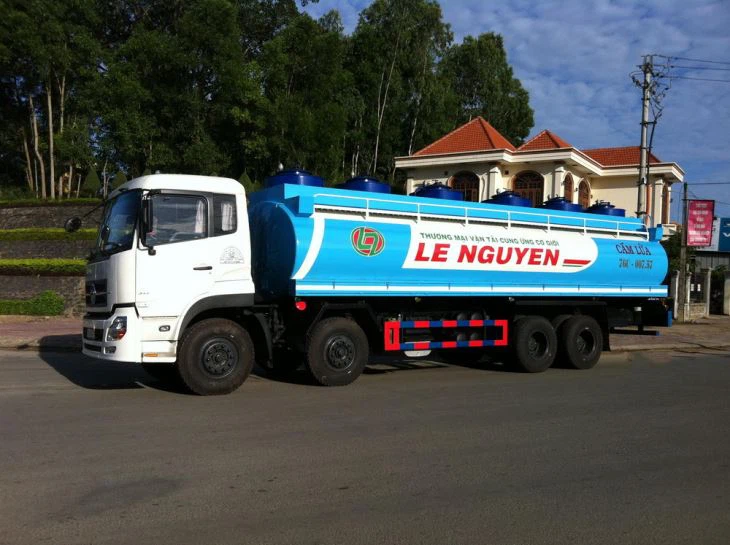How Many Gallons in an Oil Tanker: A Comprehensive Guide

Understanding the capacity of oil tankers is essential for various industries, especially shipping, logistics, and fuel production. This article will break down crucial aspects of oil tanker capacities, ranging from sizes and types to conversion metrics and practical examples.
Understanding Oil Tanker Types
1.1 Types of Oil Tankers
Oil tankers vary in size and purpose. Here are the primary types:
- VLCC (Very Large Crude Carrier): Typically holds between 1.9 million and 2.2 million barrels.
- ULCC (Ultra Large Crude Carrier): Can carry over 2.2 million barrels, making it one of the largest ships.
- Suezmax: The maximum size for vessels that can transit the Suez Canal, usually about 1 million barrels.
- Aframax: Generally ranges from 800,000 to 1 million barrels.
- Panamax: Designed to fit through the Panama Canal, with a capacity of about 500,000 to 750,000 barrels.
- Handysize: Smaller tankers that hold between 100,000 and 200,000 barrels.
1.2 Size and Capacity Metrics
When discussing the capacity of oil tankers, the terms used can often be confusing. The primary measurement units include:
- Barrels: A common unit in the oil industry, where one barrel equals approximately 42 gallons.
- Deadweight Tonnage (DWT): Represents how much weight a ship can safely carry.
How Many Gallons Are in Different Types of Oil Tankers?
2.1 Capacity Conversion
To calculate the number of gallons in an oil tanker, the volume in barrels needs to be converted to gallons. The conversion is simple:
- 1 barrel = 42 gallons
2.2 VLCC and ULCC Capacities
Let’s look at the capacities of VLCCs and ULCCs:
| Type | Capacity (Barrels) | Capacity (Gallons) |
|---|---|---|
| VLCC | 1,900,000 – 2,200,000 | 79,800,000 – 92,400,000 |
| ULCC | 2,200,000+ | 92,400,000+ |
2.3 Suezmax and Aframax Capacities
Next, we examine Suezmax and Aframax tankers:
| Type | Capacity (Barrels) | Capacity (Gallons) |
|---|---|---|
| Suezmax | 1,000,000 | 42,000,000 |
| Aframax | 800,000 – 1,000,000 | 33,600,000 – 42,000,000 |
2.4 Panamax and Handysize Capacities
Lastly, let’s review the smaller vessels:
| Type | Capacity (Barrels) | Capacity (Gallons) |
|---|---|---|
| Panamax | 500,000 – 750,000 | 21,000,000 – 31,500,000 |
| Handysize | 100,000 – 200,000 | 4,200,000 – 8,400,000 |
The Importance of Oil Tanker Capacity
3.1 Economic Impact
The capacity of an oil tanker directly correlates with shipping costs. Larger tankers can transport greater volumes, thus spreading the cost over more goods. This reduces the per-unit shipping cost, which is beneficial for the oil industry.
3.2 Environmental Considerations
Understanding the capacity is crucial when considering spill risks. Larger tankers could result in catastrophic spills, but their design often incorporates multiple safety measures.
3.3 Regulatory Compliance
Each tanker type has specific guidelines and regulations regarding their construction, operation, and maintenance. This ensures that they meet safety standards as set by international maritime authorities.
Calculation Examples
4.1 Example 1: Converting Barrels to Gallons
If a VLCC has a capacity of 2,000,000 barrels, how many gallons can it hold? The calculation is:
2,000,000 barrels × 42 gallons/barrel = 84,000,000 gallons
4.2 Example 2: Different Tanker Types
For a Suezmax tanker with a capacity of 1,000,000 barrels, it would hold:
1,000,000 barrels × 42 gallons/barrel = 42,000,000 gallons
Practical Tips for Understanding Tanker Operations
5.1 Knowing the Capacity Before Shipping
It’s crucial to determine the capacity of the oil tanker before planning shipments based on the destination and volume of oil available.

5.2 Safety Protocols
Understanding the capacities can help in implementing efficient safety protocols, ensuring the vessel remains compliant with environmental regulations.
5.3 Choosing the Right Tanker Type
The selection of a tanker type should be based on the volume needed for transport. For smaller shipments, a Handysize or Panamax would suffice, while larger volumes may require a VLCC or ULCC.
Innovations in Oil Tanker Technology
6.1 Advanced Hull Designs
Modern oil tankers often feature hull designs that reduce drag, improving fuel efficiency and overall performance.
6.2 Automation and Monitoring
Technological advancements allow for real-time monitoring of oil levels, hull integrity, and navigational systems enhancing safety and efficiency at sea.
6.3 Eco-Friendly Options
There is a growing trend toward eco-friendly tankers that utilize alternative fuels, such as LNG, to reduce the environmental impact.
Economic Impact of Oil Tanker Capacities
7.1 Market Fluctuations and Oil Prices
The capacity of oil tankers influences overall market dynamics. Larger tankers can quickly satisfy demand during price surges, whereas smaller tankers may operate in niche markets.
7.2 Future Trends in Oil Transport

This section discusses possible trends such as green technology and improved safety regulations that may shape the future of oil transportation.
FAQ Section
8.1 How many gallons can a typical oil tanker hold?
The amount varies widely; for example, a VLCC can hold between 79.8 to 92.4 million gallons.
8.2 What is the largest oil tanker currently in operation?

The largest operational oil tanker is often the ULCC, which can hold over 92 million gallons depending on design.
8.3 How is oil measured in tankers?
Oil is typically measured in barrels, and the conversion to gallons is done using the factor of 42 gallons per barrel.
8.4 What are the safety measures for oil tankers?
Safety measures include double hull designs, emergency shutdown systems, and real-time monitoring equipment to prevent spills and accidents.
8.5 Why does tanker size matter?
Tanker size affects shipping cost, environmental safety, and compliance with international maritime regulations.
8.6 Can oil tankers be converted for other uses?
Yes, many older oil tankers are converted to transport other types of cargo or can be recycled for their materials.
